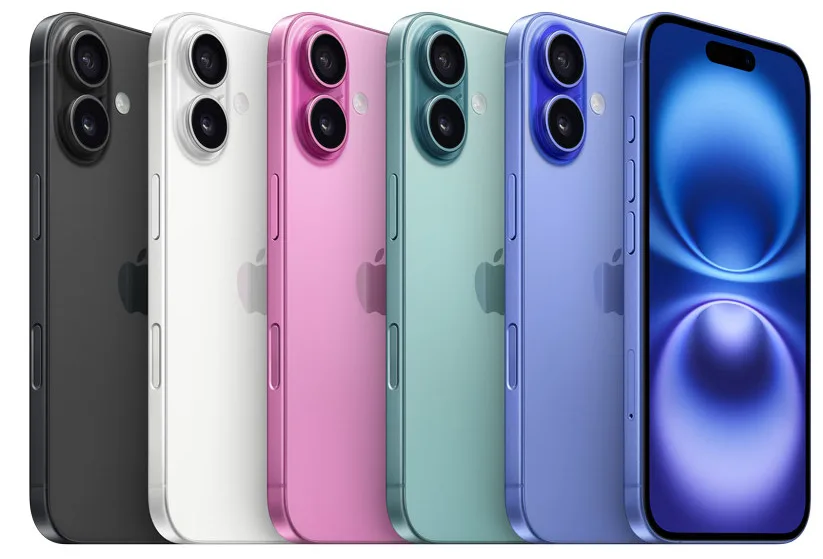Apple’s latest releases, the iPhone 15 and iPhone 16, have sparked interest among tech enthusiasts and everyday users alike. Here’s an in-depth look at how these two models stack up against each other, focusing on design, performance, camera capabilities, battery life, and additional features.
Design and Display
- iPhone 15: The iPhone 15 retains the classic look with an aluminum frame and color-infused glass back. It features a 6.1-inch Super Retina XDR OLED display with a standard 60Hz refresh rate, which has been consistent across Apple’s baseline models.
- iPhone 16: While maintaining similar dimensions, the iPhone 16 introduces a more durable design with an updated Ceramic Shield cover glass, claimed to be tougher than before. The display specs remain largely the same, with a 6.1-inch Super Retina XDR OLED, but it now supports a minimum brightness of 1 nit for better night-time viewing.
- Color Options: The iPhone 16 introduces new colors like Ultramarine, Teal, and Pink, replacing some brighter hues from the iPhone 15’s palette, which included Black, Blue, Green, Yellow, and Pink.

Performance
- iPhone 15: Equipped with the A16 Bionic chip, it offers excellent performance for multitasking, gaming, and app usage.
- iPhone 16: A significant leap with the A18 chip, which is two generations ahead of the A16. This new chip is designed with AI optimizations in mind, providing 30% faster GPU performance and enhanced energy efficiency. The iPhone 16 also bumps up RAM to 8GB from 6GB in the iPhone 15, making it even more capable for demanding tasks.
Camera System
- iPhone 15: Features a 48-megapixel main camera and a 12-megapixel ultra-wide camera. While offering good quality, it lacks the new features of its successor.
- iPhone 16: Retains the 48-megapixel main camera but introduces a new 12-megapixel ultra-wide camera with a wider aperture for better low-light performance. It also adds macro photography capabilities, spatial video recording, and a new capacitive Camera Control button for more intuitive camera operations.
Battery and Charging
- iPhone 15: Offers up to 20 hours of video playback with standard USB-C charging.
- iPhone 16: Boasts a slight increase in battery life, with up to 22 hours of video playback. It supports faster MagSafe wireless charging up to 25W, compared to the iPhone 15’s 15W. However, both models stick to USB-C for wired charging, with no increase in speed from the iPhone 15.
Unique Features
- iPhone 15: Does not support Apple Intelligence, a new suite of AI-driven features.
- iPhone 16: Introduces Apple Intelligence, enhancing user interaction with new AI tools for writing, editing, and productivity. It also features an Action Button, similar to what was previously exclusive to Pro models, allowing for custom shortcuts.
Price and Availability
- Both phones start at similar price points, with the iPhone 16 maintaining the same $799 price tag for the base model as the iPhone 15 had at launch. However, with the release of the iPhone 16, the iPhone 15 has seen a price reduction, making it a more budget-friendly option for those not needing the latest features.
Conclusion
If you’re considering an upgrade from the iPhone 15 to the iPhone 16, the decision largely depends on your needs. The iPhone 16 offers significant improvements in performance, camera technology, and additional user convenience with features like Apple Intelligence and new buttons for camera control. However, if budget is a concern, or if you’re satisfied with the performance of the iPhone 15, the older model remains a compelling choice, especially at its reduced price.
Ultimately, the iPhone 16 is the choice for those wanting the latest and greatest from Apple, particularly in terms of AI capabilities and camera advancements, while the iPhone 15 continues to be a reliable and powerful device for everyday use.

